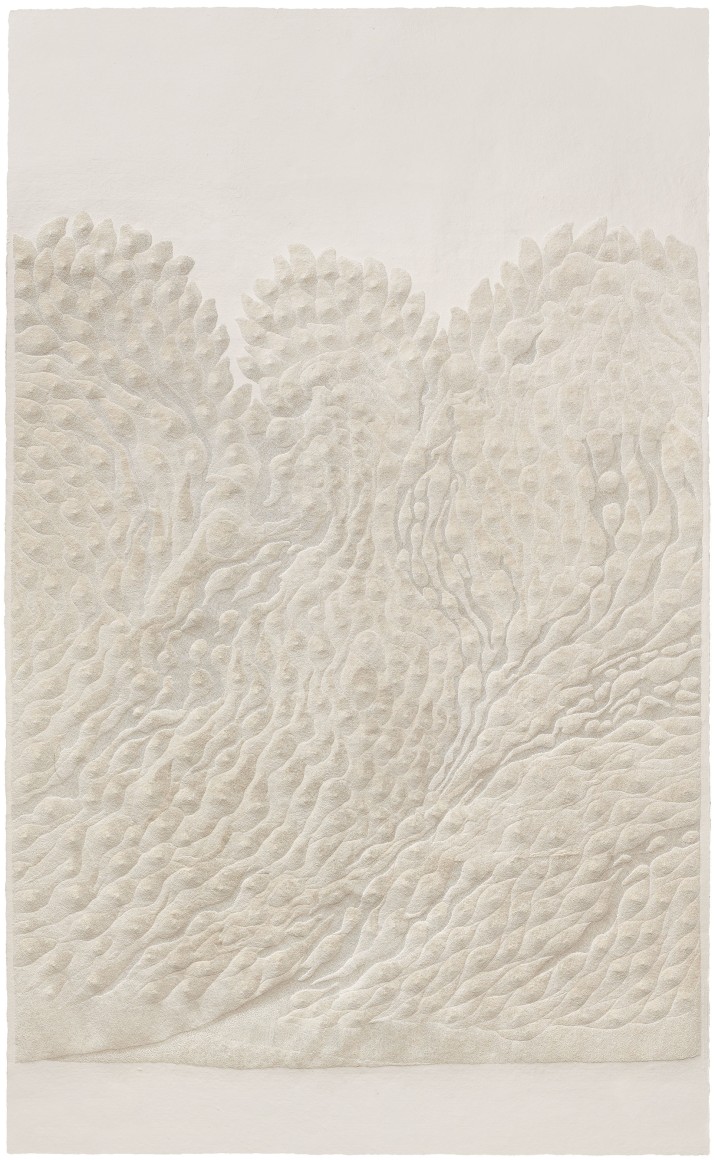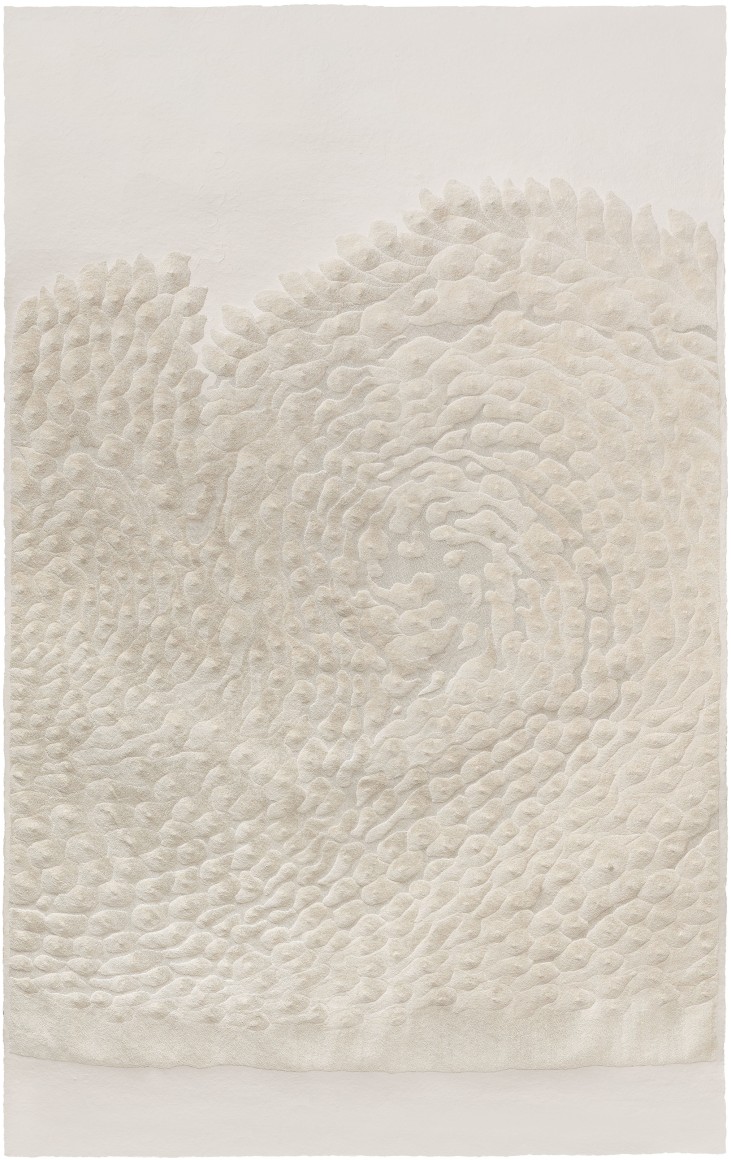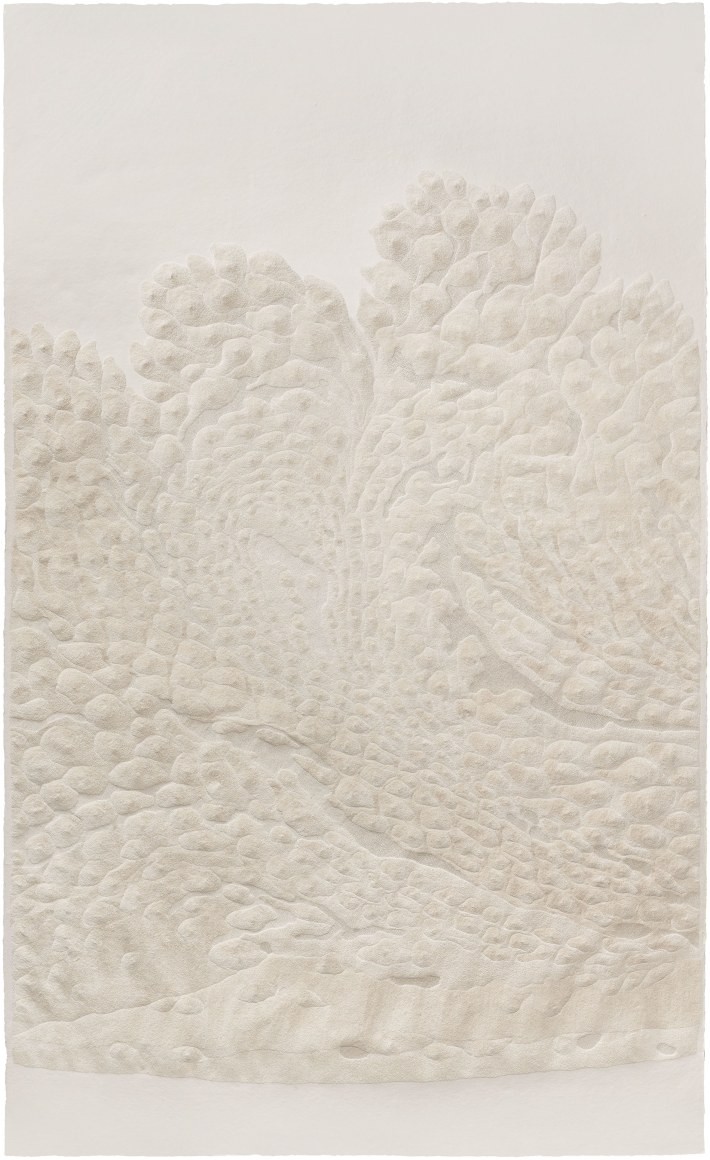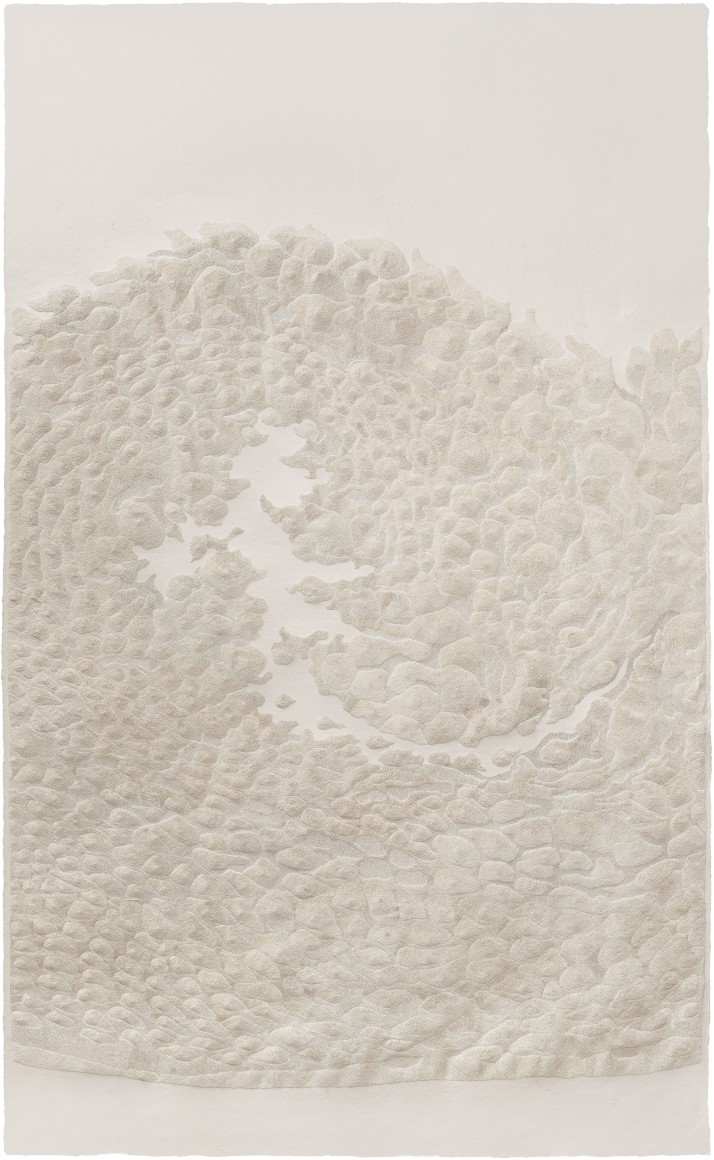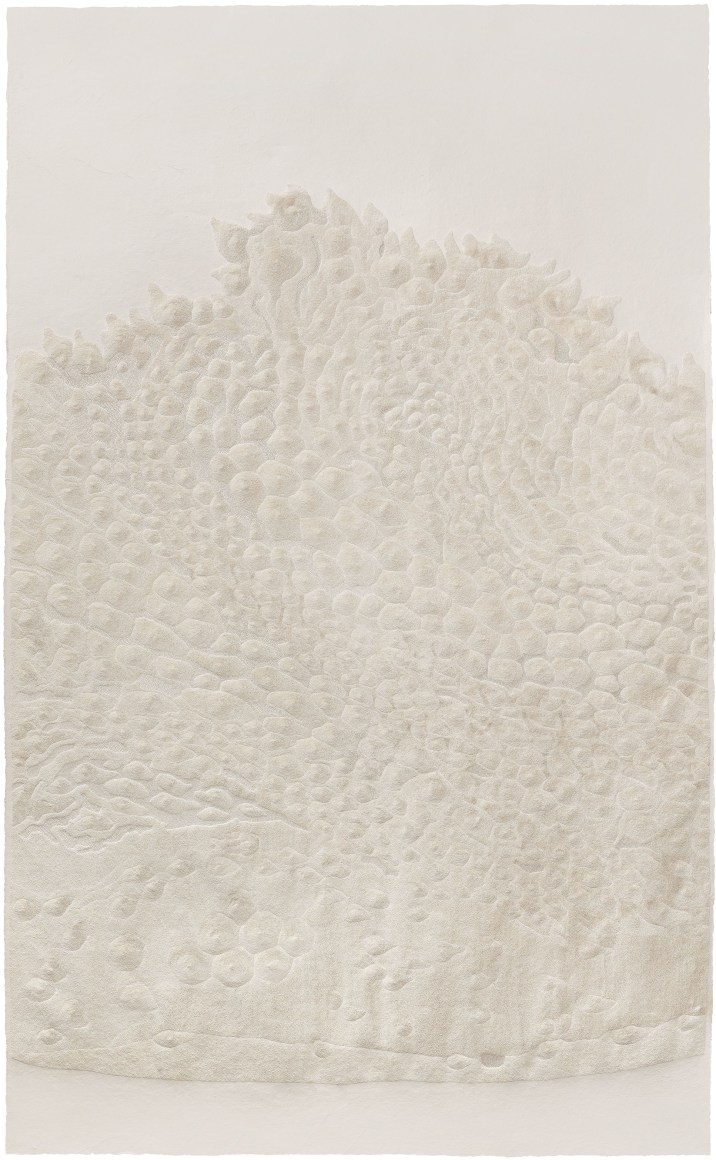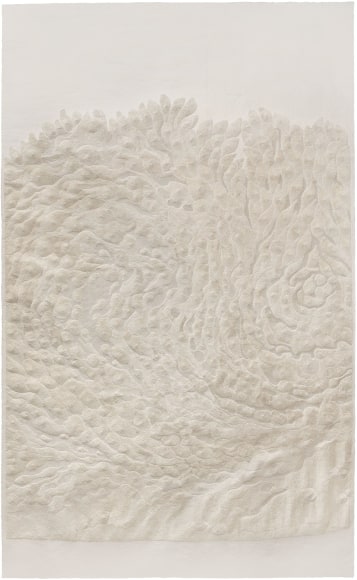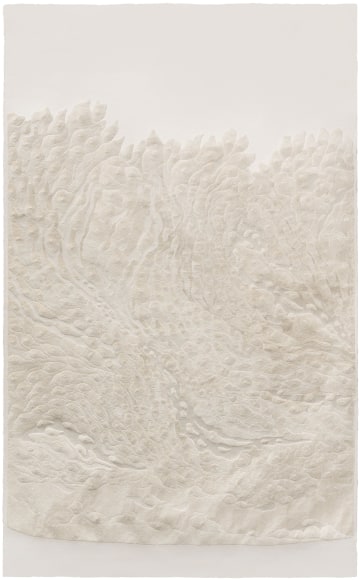Chambers Fine Art is pleased to present a solo exhibition by artist Fu Xiaotong at EXPO Chicago called Proliferation. Shown for the first time at EXPO, this will be a new multi-panel series of artworks that builds upon her recent exhibition at our Chelsea, New York gallery space.
Born in Shanxi in 1976, Fu Xiaotong received her BA in Fine Arts from the Tianjin Academy of Fine Arts in 2000 and for the next decade was primarily active as a painter. Feeling that she was at an impasse, she enrolled in the Experimental Art Department at the Central Academy of Fine Arts (CAFA) in Beijing from which she graduated in 2013.
While studying under Wu Jian’an, well-known for his exploration of the paper cut technique, Fu Xiaotong developed a strong affinity for handmade Xuan paper that has been used within China since the Tang Dynasty (618-907) and is still the preferred support for traditional brush and ink painters and calligraphers. “In the end,” she has written, “I chose handmade Xuan paper to be my primary medium and decided to use needles to pierce holes in the paper to form images.” Elsewhere, she has written that “in the course of study on the language of materials, I learned to focus on the material itself. In general, in Chinese painting, ink covers the beauty of the paper but it is my aim to reveal it without any interference. I do not paint or write on it, but rather create images through the accumulation of thousands of holes that I create with my needle.”
In spite of her wish to disassociate herself from the cultural associations of Xuan paper, she used it to create visual equivalents of the lofty mountains and rushing streams that had characterized the long history of traditional Chinese landscape painting (Shan Shui). As she gained in confidence she evolved a “language of the needle” consisting of five different ways of approaching the surface of the paper. Early on in the development of this technique, she only perforated the surface of the paper from directly above, but eventually she also approached it from the reverse and at an angle from the left and from the right. By now she has such control over the use of the needle that she is able to visualize how different combinations of directional strokes result in convincing representations of rocks and water. Seen from close-up, the texture of her paper works resembles textiles or tapestries in the intricate interlocking of the multiple units of directional needle holes.
Her paper works of 2017 and 2018 are characterized by an evolution in her technique and a transition in her imagery from the landscape motifs with which she is most closely associated to a more abstract language of forms. No longer using a limited repertoire of directional pinpricks according to predetermined plans, she now starts from the center and works in a circular rhythm, softening the sturdy paper until it results in a pronounced three-dimensional surface. These undulating surfaces evoke a multitude of associations, organic, cellular, human or animal skin, breaking waves or breast-like forms that recall an important aspect of the work of Louise Bourgeois.
Although the natural world has always been important to Fu Xiaotong as a source of inspiration, she gives equal importance to the procedure she uses in the creation of her works, choosing to title them according to the number of pinpricks required. In the current exhibition there are works that range from 427,000 pinpricks to 1,400,940 for the largest. Although the relationship of her work to traditional Chinese motifs is self-evident, it is also instructive to consider it in relation to artists such as Roman Opalka (1931 – 2011) who began painting numbers from one to infinity in 1965 or a work such as One Million Years (1999) by On Kawara (1932 – 2014). Through her obsessive daily practice, she revitalizes a theme that has been so important throughout Chinese history.

